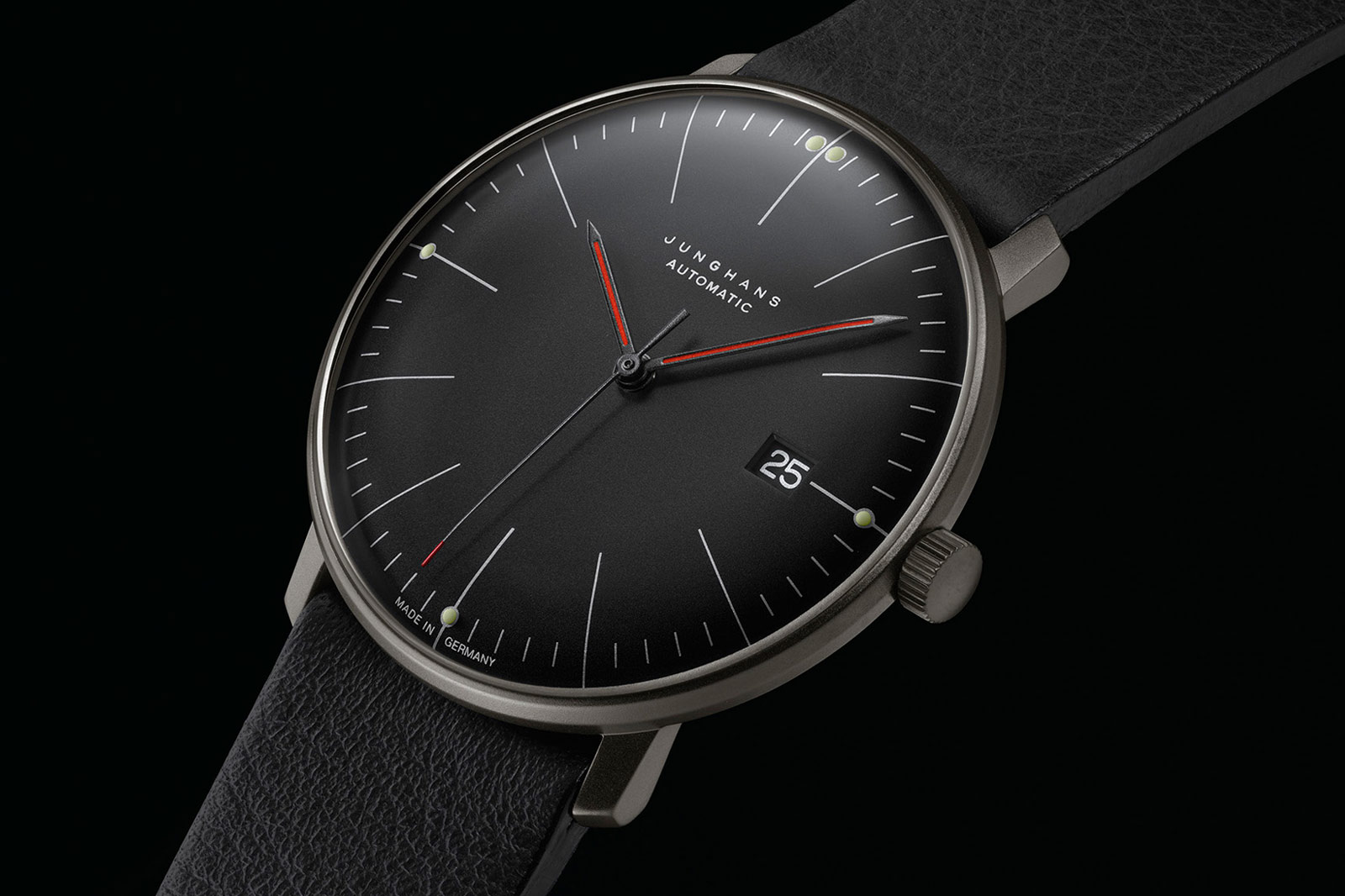
Bauhaus. We’ve actually talked about Bauhaus quite a lot this year with watch releases like the Nomos Tetra and the Farer ‘Almost Bauhaus’, to the point where my instincts would be to avoid rehashing old concepts that you, our lovely readers, are probably familiar with. Then Junghans go and introduce their latest timepiece, the Max Bill Automatic Bauhaus, which not only has Bauhaus in its name, but also the caseback features a depiction of the actual Bauhaus. So, strap in, it’s time to talk German design school again.
Let’s actually start by looking at the aforementioned caseback. It’s made from steel with a partially openworked design protected by a transparent glass cover. Printed onto the steel are the iconic lines and cubic shapes of the Staatliches Bauhaus, the German school in Dessau that is synonymous with the eponymous design movement. The building’s signature wall of windows is represented here by the open portion of the back, revealing the calibre beneath, acting as windows to the movement. It’s one of the coolest casebacks I’ve seen in a while, trumped only by the M.C. Escher vibes of the Glashütte Original Panoinverse.
Looking at the dial of the Max Bill Automatic Bauhaus shows off a lot of concepts that were born from the teachings of that school. Concepts such as form, function and style being the same thing and that shape and colour are the core building blocks of design. The perfectly circular shape of the dial and 38mm, black PVD steel case matches the rotational movement of the hands – there’s no excess, the shape is purely fitted to the function. The hour and minute markers are simple lines because you don’t need them to be anything else. The colours are some of the most foundational in the entire spectrum, black, white and the primary colour red. The use of red also happens to be a reference to the red door of the Bauhaus itself.
Housed inside the Max Bill Automatic Bauhaus is the automatic J800.1 movement, which is based on the ETA 2824-2 with 38-hour power reserve. The 2824-2 has been in produced in its many clone forms since 1982 and I think its age is starting to show because that power reserve does not do modern watches justice. The counter argument is that it is a culturally impactful movement that helped to revive the industry after the quartz crisis and remembering its influence is important – in the same way that Bauhaus revived German design following WWI and we remember it with watches like this one.
Price and Specs:
Junghans Max Bill Automatic Bauhaus
27/4308.02
38mm diameter x 10mm thickness, black PVD coated stainless steel
Matte black, black hands with red accents
50m (5 bar)
Junghans calibre J800.1, automatic, 25 jewels
28,800 vph (4 Hz)
38h
Hours, minutes, seconds, date
Leather with black PVD coated stainless steel buckle
€1,455 (approx. £1,230)
More details at Junghans.
Oracle Time